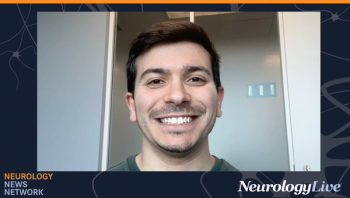
Chronic Traumatic Encephalopathy: Potential Biomarker
Blood protein analysis of plasma total tau has diagnostic use in Alzheimer disease. Could the same hold true for CTE?
Chronic traumatic encephalopathy (CTE) is a neurodegenerative tauopathy that cannot be diagnosed in vivo. Michael Alosco, PhD, Boston University School of Medicine, Boston, MA, and colleagues investigated the potential of plasma total tau (t-tau) as a screening biomarker for CTE.
Repetitive head impact (RHI) is associated with increased levels of plasma t-tau, as well as the development of CTE. Because blood protein analysis of t-tau can be used to diagnose Alzheimer disease, researchers hypothesized that plasma t-tau could detect long-term neurologic conditions, such as CTE, from RHI.
The study utilized 96 symptomatic former NFL players between the ages of 40 and 69 years who were presumed to be at high risk of CTE. The players were age-matched to 25 controls. All subjects completed neuropsychologic and neuropsychiatric testing in addition to blood tests. Quanterix Simoa-HD1 tau assay measured plasma t-tau, Principal Component Analysis derived clinical function composites, and cumulative head impact index (CHII) estimated RHI exposure. After adjusting for age and BMI, researchers examined associations between plasma t-tau, CHII, and clinical function.
Plasma t-tau was not associated with clinical function (P>0.05), but former NFL players usually had higher plasma t-tau levels than controls (P=0.04). Also, a higher CHII predicted increased plasma t-tau in former NFL players (P=0.0137). Plasma t-tau ≥3.56 pg/mL in former players (no controls had concentrations at this level) had higher CHII compared to the remaining sample (P=0.018).
“The take-home message of the study is that there was a direct relationship of exposure to repetitive head impacts and later-life plasma total tau concentrations. That suggests to us that plasma total tau may indeed be a plausible candidate screening biomarker to look at some these consequences associated with repetitive head impacts,” said Alosco.
Due to the low cost and non-invasiveness of plasma t-tau screening, Alosco and colleagues recommend further study of this method as a potential screening biomarker for CTE, including repeating the study after CTE can be clinically diagnosed.
“Ultimately, what we need to be able to do is diagnose CTE during life. Once we can do that, we’ll be able to examine these invasive and noninvasive biomarkers to help support a probable CTE diagnosis,” said Alosco. “We need to look at total tau in conjunction with other plasma proteins, such as hyperphosphorylated tau as well as beta-amyloid, and look at the different patterns or profiles of these different proteins in order to specifically detect these different neurodegenerative diseases in life, such as CTE, one day.”
Alosco M, et al. An Investigation on Repetitive Head Impact Exposure and Plasma Total Tau Concentrations in Former National Football League Players. From materials presented at
Newsletter
Keep your finger on the pulse of neurology—subscribe to NeurologyLive for expert interviews, new data, and breakthrough treatment updates.



























